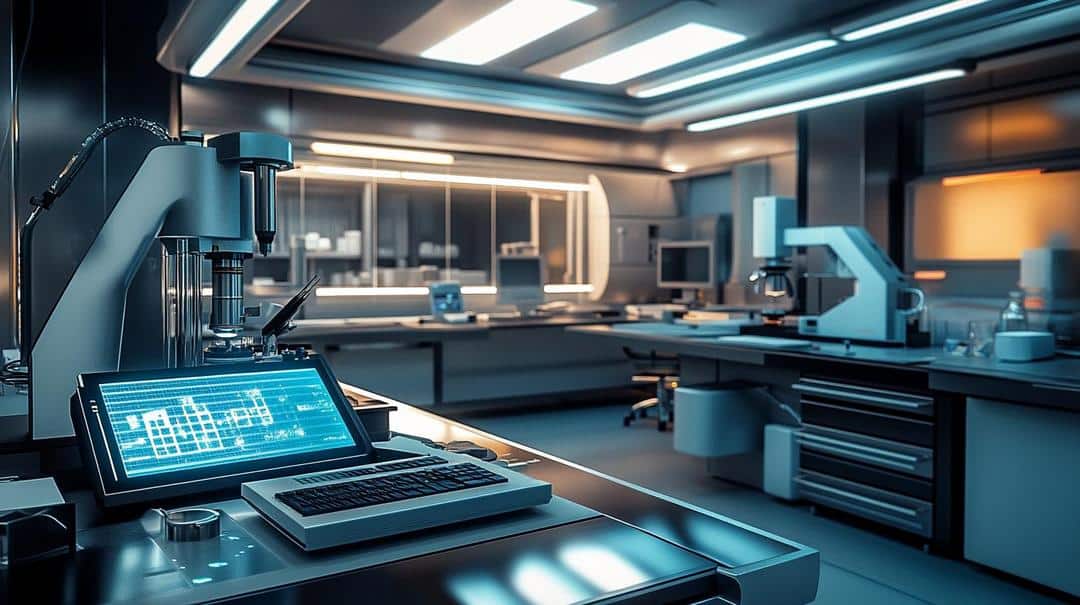Did you know rare earths are so vital that 17 elements on the periodic table are solely designated as “rare earth elements”? Intrigued yet? Rare Earth have become so incredibly vital to our global economies that research and innovation have become vital to the growth and sustainability of mining, refining, and industrializing of these materials.
Let’s highlight some equipment commonly used by researchers in this space.
What's Inside
What Is Rare Earth Research Equipment, and Why Is It So Specialized?
Rare earth elements represent a unique class of materials with extraordinary properties that demand equally sophisticated research tools. These elements – comprising 17 metallic elements on the periodic table – possess remarkable magnetic, luminescent, and catalytic characteristics that make them critical to advanced technologies.
Understanding the Complexity
Rare earth research equipment differs significantly from standard analytical instruments due to several key challenges:
- Extremely low concentration of rare earth elements in natural deposits
- Complex chemical and physical properties
- High sensitivity requirements for accurate detection
- Need for precise separation and characterization techniques
Real-World Significance
The specialized nature of rare earth research equipment stems from critical applications in:
- Advanced electronics
- Renewable energy technologies
- Medical imaging systems
- Defense and aerospace industries
The Core Tools: 7 Best Rare Earth Research Equipment for Advanced Studies
1. Inductively Coupled Plasma Mass Spectrometer (ICP-MS)
How It Works
- Ionizes sample materials using high-temperature plasma
- Separates and detects elemental composition with exceptional precision
Key Features
- Ultra-trace level detection capabilities
- Multi-element analysis in seconds
- Sensitivity down to parts per trillion
Applications
- Geological sample analysis
- Environmental monitoring
- Metallurgical research
Typical Price Range
- $250,000 – $500,000
2. X-ray Diffraction (XRD) Equipment
How It Works
- Determines crystal structures through X-ray interaction with material
- Provides detailed insights into atomic arrangements
Key Features
- High-resolution structural mapping
- Non-destructive analysis
- Capable of studying complex rare earth compounds
Applications
- Mineral identification
- Phase composition analysis
- Crystallographic research
3. Scanning Electron Microscope (SEM)
How It Works
- Uses focused electron beam to generate high-resolution surface images
- Provides detailed morphological and compositional information
Key Features
- Magnification up to 500,000x
- Elemental composition mapping
- High-depth field imaging
Applications
- Microstructure analysis
- Particle size and distribution studies
- Surface contamination detection
4. Rare Earth Element Analyzer (REE Analyzer)
How It Works
- Specialized instrument for direct rare earth element quantification
- Combines multiple analytical techniques
Key Features
- High-precision elemental separation
- Simultaneous multi-element detection
- Automated sample preparation
Applications
- Mining exploration
- Ore processing optimization
- Academic research
5. Magnetic Separator
How It Works
- Utilizes magnetic fields to separate rare earth minerals
- Exploits unique magnetic properties of rare earth elements
Key Features
- Variable magnetic field strengths
- Continuous and batch processing modes
- High separation efficiency
Applications
- Mineral processing
- Recycling technologies
- Material purification
6. Thermogravimetric Analyzer (TGA)
How It Works
- Measures weight changes during controlled temperature progression
- Provides insights into thermal stability and decomposition
Key Features
- Precise temperature control
- Sensitive mass measurement
- Comprehensive thermal characterization
Applications
- Material stability assessment
- Chemical reaction studies
- Mineral processing
7. High-Temperature Furnace
How It Works
- Provides controlled high-temperature environments
- Essential for rare earth material processing and research
Key Features
- Uniform temperature distribution
- Inert atmosphere capabilities
- Precise temperature programming
Applications
- Material synthesis
- Thermal treatment studies
- Advanced ceramic research
Key Differentiators: Choosing the Right Rare Earth Research Equipment
Critical Selection Factors
- Performance precision and accuracy
- Analytical capabilities
- Intended research or industrial application
- Long-term maintenance requirements
- Budget constraints
Comparative Considerations
- Resolution capabilities
- Detection limits
- Sensitivity ranges
- Compatibility with specific research objectives
Steps to Maintain and Optimize Rare Earth Research Equipment
Maintenance Best Practices
- Regular calibration
- Proper cleaning protocols
- Environmental control
- Routine performance checks
- Professional servicing
Troubleshooting Guidelines
- Identify common operational errors
- Implement preventative maintenance schedules
- Train personnel on proper equipment handling
Emerging Trends in Rare Earth Research Equipment Technology
Future Technological Developments
- AI-assisted analytical techniques
- Miniaturized portable analysis tools
- Eco-friendly processing technologies
- Enhanced computational modeling
Predicted Innovations
- More sustainable extraction methods
- Improved energy efficiency
- Greater automation in rare earth research
- Advanced machine learning integration
Conclusion
Having the right equipment can make or break your discovery or operational success. Tools like ICP-MS, SEM, and magnetic separators have revolutionized our ability to understand better and recover rare earth materials. By understanding the capabilities and applications of these cutting-edge instruments, researchers can push the boundaries of material science and industrial innovation.
FAQs
What are rare earth elements primarily used for?
Rare earth elements are vital for manufacturing high-tech devices like smartphones, electric vehicles, wind turbines, and military-grade technology due to their unique magnetic, optical, and chemical properties.
Why is rare earth research equipment expensive?
Specialized rare earth research tools are designed for high precision and sensitivity, often involving cutting-edge technologies like mass spectrometry and electron microscopy. This precision drives up costs.
How are rare earth elements processed using these tools?
The equipment is used to study rare earth properties, detect element concentrations, separate elements, and develop new applications for these materials in energy, electronics, and other industries.
Can universities afford rare earth research equipment?
Universities often secure funding through grants or partnerships with industries to acquire these advanced instruments. Shared research facilities also allow multiple departments to share equipment.
Are portable rare earth research tools available?
Emerging technologies, such as handheld X-ray fluorescence (XRF) analyzers, offer portable solutions for quicker field testing, though they might lack the analytical depth of lab-based equipment.


Dustin
Driven by a fascination with rare earth elements and their role in powering modern tech and engineering marvels. A true car and tech enthusiast, he loves exploring how these hidden heroes fuel our most exciting innovations.
You Might Also Like…